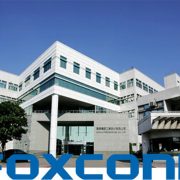Cynora, TADF will contribute to high-resolution implementation of OLED devices and panel cost reduction
At the Global Materials Tech Fair 2017 held on September 22 in COEX, CEO Ko Chang-hoon of EM Index, Cynora’s Korean partner, announced the development of the thermally activated delayed fluorescence, blue TADF, which is currently under development at Cynora.

<CEO Ko Chang-hoon of EM Index>
Generally, the blue light emitting material is insufficient in life and efficiency compared to red and green. For this reason, OLED panels for mobile devices are manufactured relatively large in blue pixel size compared to other pixels, in the OLED panel for TV, blue light emitting layers are laminated twice. The blue TADF is the material that is being developed to overcome the limitations of this blue light emitting material.
CEO Ko Chang-hoon mentioned “Applying blue TADF increases lifetime and efficiency, so it does not need to increase pixel size and it is advantageous for high resolution implementation” and emphasized “In mobile devices, it will be advantageous to reduce power consumption as well as realize high resolution and in case of TV, it will be advantageous to reduce the panel cost because only one layer of blue light emitting layer needs to be formed.”
He referred to the recent investments of € 25 million from Samsung Venture Investment and LG Display and explained that it was a proof that blue TADF is attracting a lot of attention.
It is also close to the efficiency, lifetime and color purity of the blue TADF required by major OLED panel makers and is expected to meet these requirements by the end of 2017.

<Cynora’s blue TADF development progress>
Finally, the company announced the development roadmap for the green TADF by the end of 2018 and the red TADF by the end of 2019, and concluded by emphasizing that TADF would contribute to high-resolution implementation of OLED products and panel cost reduction.

<Cynora’s TADF product development roadmap>











